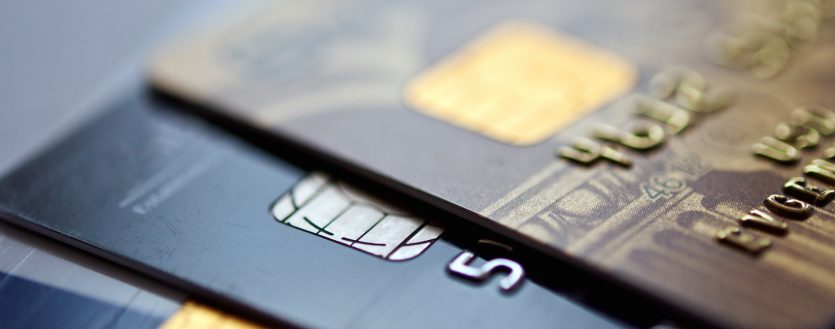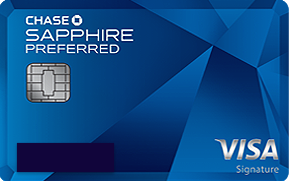
In the Beginning
If you are just starting to collect frequent flyer miles, hotel points and other loyalty based travel currencies, you should have at least one rewards credit card. Ideally you should have enough rewards credit cards to maximize every purchase in a variety of shopping categories, but having just one card is good (and safe) place to start. Certainly it’s possible to collect points and miles without having a credit card that earns your rewards, but you’ll do so at a much slower pace. In addition, every major rewards credit card comes with a sign up bonus of some kind. The major banks in the credit card rewards system are Chase, Amex, Barclays, Citibank, Bank of America, US Bank, Capital One with other banks like Wells Fargo, Banco Popular and others also having cards, offers, and programs but they are not in the upper echelon for travel rewards.
The sign up bonus for a typical rewards credit card might be linked to frequent flyer miles, hotel points, other points, cash back, statement credit, or other incentive. Typically you’ll see an offer that goes something like this: receive 50,000 bonus frequent flyer miles for opening a new credit card with Bank X, after spending $3,000 in 90 days. The deal is simple: after you spend $3k on your credit card, or an average of $1,000 per month in this example, you’ll get the bonus miles. Don’t forget that $3k that you spent to earn the bonus too, so you’re really getting at least 53,000 frequent flyer miles (50k bonus + at least 3k miles for the spend). Sign up bonuses for top rewards credit cards generally range from 20,000 points up to 100,000+, with around 50,000 to 60,000 points/miles being the most common.
These points can usually be redeemed in a myriad of ways such as through travel, merchandise, statement credit, and cash back. Don’t be tempted to burn miles for newspapers, merchandise; the best way to get the most “value” from using these points is to redeem for travel.
Besides the sign up bonus, these rewards credit card also earn you miles/points for money that you spend on the card. Some cards have simple formulas for that reward such as $1 spent = 1 reward point/mile. Other cards up that earning potential and give 1.5 or 2 points for every dollar spent. Still other cards are structured with category bonus spending that will offer the $1 spent = 1 reward point/mile as a base, but then offer 2-5 points/miles if you spend in certain categories like grocery, office supply stores, gas, travel, and more.
In short there are different banks that offer different rewards cards. The cards have a variety of sign up bonuses, point rates for spending, and point currencies that can later be redeemed. So which cards are best for those who are starting out collecting award points and miles?
Best Rewards Cards to Start: Chase
For almost anyone starting out, I think the first card (and probably the first 5 cards if they continue in the hobby) should be Chase. In general, Chase has the best rewards cards with the best bonuses, but the bank has also instituted the game changing 5/24 rule (more than 5 applications for almost any credit card in the past 24 months will not allow you to get Chase’s top rewards cards). For more information on the 5/24 rule, please read this. For a list of credit cards affected by 5/24, see this link.
The Chase points currency, Ultimate Rewards (UR), is very valuable and can be redeemed directly through the Chase Travel Portal or transferred to one of their 10 different airline and hotel partners.
Best Overall Card for Beginners

Chase Sapphire Preferred
Sign Up Bonus – generally 50,000-60,000 Ultimate Rewards
Spend Requirement: $4,000 in 90 days
Annual Fee – none first year, then $95 after that
Main benefits:
– 2x points on dining
– No foreign transaction fees
– Nice customer service (US staffed)
– Points worth 1.25 cents per point when redeeming (or 50,000 points = $625 worth of travel) directly with Chase
– Transfer points at 1:1 ratio to 12 different airlines and hotels
– No blackout dates or restrictions when booking travel
– Events and experiences
Other notable benefits:
– Auto rental collision damage waiver
– Trip delay reimbursement
– Lost luggage reimbursement
– Travel and emergency assistance
– Travel accident insurance
The main reasons why the Chase Sapphire Preferred is probably the best beginner card because:
1) You can use the card for a full year without paying an annual fee
2) The sign up bonus is worth at least $625 (50,000 points x 1.25 cpp)
3) It earns Ultimate Rewards, a very valuable points currency with great airline and hotel partners
4) There is some category bonus for spending on dining
5) After year 1 you can downgrade into a great no annual fee card like the Chase Freedom or Freedom Unlimited, keeping your points and continuing to earn more points. You also have the option of upgrading into the Sapphire Reserve.
As sister card to the Preferred, Chase launched the high end Sapphire Reserve card in August of 2016. The card did come with up front sticker shock as the annual fee was set at $450. However, the card initially came with a sign up bonus of 100,000 Ultimate Rewards but other notable benefits like a $300 credit for any travel related expense that was available once each calendar year, making it possible to get $700 worth of credits to completely offset the annual fee and make the card profitable. The benefits of that card easily outweighed the annual fee, and with the ability to redeem points at 1.5 cents per points, that was the best travel credit card on the market. That bonus has now been lowered to 50,000 points and the travel credit has been changed to once every 12 months, making it a quality card, but not the top card for beginners.
If a person that’s new to points and miles has a business, then a top rewards card for them may be the Chase Ink Preferred. The Ink Preferred comes with a sign up bonus of 80,000 – 100,000 Ultimate Rewards, and annual fee of $95, and:
Main benefits:
– points are worth 1.25 cpp when redeemed for travel at Chase’s Travel Portal
– an earning rate of 3 UR per $1 spent on the first $150,000 spent in combined purchases on travel, shipping purchases, internet, cable and phone services, and on advertising purchases made with social media sites and search engines each account anniversary year
– the ability to downgrade into the no annual fee Chase Ink Cash, which earns 5x points at office supply stores
Other notable benefits:
– Purchase protection that covers your new purchases for up to 120 days against damage or theft up to $10,000 per claim and $50,000 per account
– Primary car rental insurance but only if you can prove that you are traveling on business
The Chase Ink Preferred has a substantial sign up bonus, but most people will probably not be able to fully take advantage of the card after achieving those initial points.
Summary
Certainly there are a number of top rewards cards on the market. A card like the Barclays Arrival Plus might be a more versatile and easier card for most people to manage and earn points with, but the 5/24 rule makes each application outside of the Chase card offerings a huge detriment to a person’s rewards potential. Each person’s situation is different and rewards cards should be matched to those needs. As of the summer of 2017, the Chase lineup of rewards credit cards is still the best out there. Start there, see how it goes, then decide if you want to continue further in the points and miles hobby.
